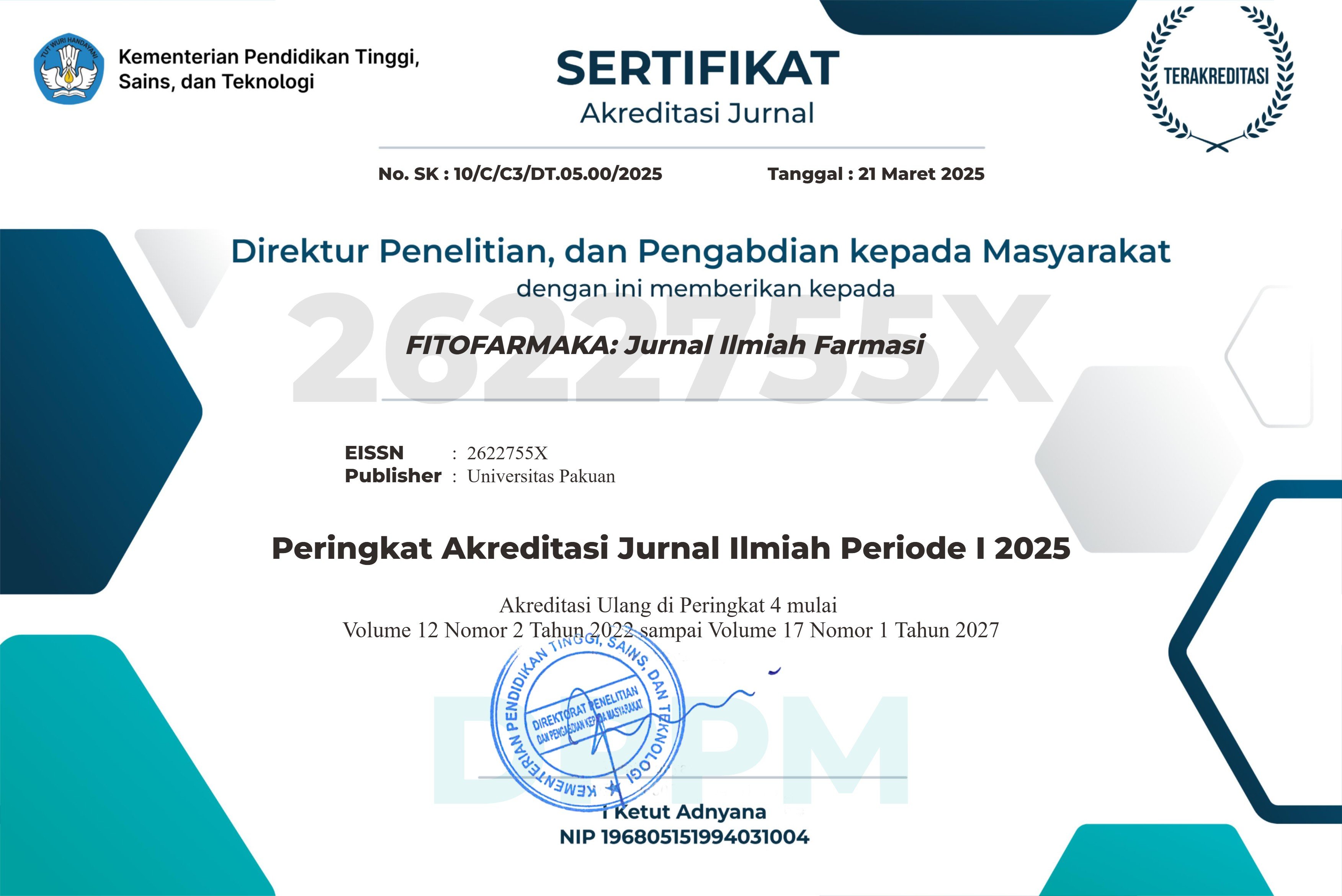Effectiveness of Auricularia polytricha Extract Gel on Burn Wound Healing in Male White Rats
Abstract
The number of burn cases in Indonesia has increased to 0.6% to 1,3% cases in January-august 2022. One way to address this issue is by inhibiting Staphylococcus aureus bacteria, which can otherwise impede the wound healing process. One of the herbal plants known for its efficacy in wound healing is the Auricularia polytricha. A. polytricha is known to contain flavonoid compounds that are potentially beneficial in wound healing. This study aims to evaluate the effectiveness of A. polytricha extract gel in healing burn wounds on white rats, using concentrations of 5%, 7.5%, and 10%. The gel was applied once a day for 14 days. Burns were created using an electric solder with a round metal plate tip of 1 cm in diameter. The solder was connected to an electric current for 5 minutes, then applied to the rats' skin for 5 seconds to create second-degree burns, followed by the application of topical A. polytricha extract gel. Macroscopic and microscopic data were analyzed using SPSS. The results showed that the administration of A. polytricha extract gel accelerated the healing of burn wounds in white rats. Macroscopic observations indicated that the 10% concentration of A. polytricha extract gel showed the best healing percentage compared to other groups. Microscopic observations revealed that the 10% A. polytricha extract gel scored 6.3, placing it in the good category.
Downloads
Published
How to Cite
Issue
Section
License
Copyright (c) 2024 FITOFARMAKA: JURNAL ILMIAH FARMASI

This work is licensed under a Creative Commons Attribution-ShareAlike 4.0 International License.








